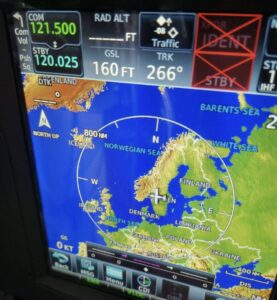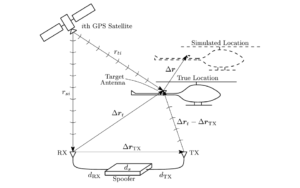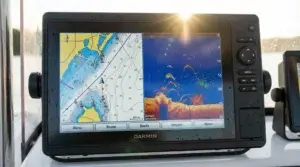Drone GPS spoofing is all about manipulating the signals that a drone receives, making it think it’s flying somewhere it’s not.
It’s like tricking your friend’s GPS so they think they’re still on Main Street when they’re really driving through Maple Avenue. The technology behind spoofing is a bit more complex, but that’s the basic idea.
The concept of GPS spoofing isn’t brand new. It’s been around since GPS tech became a thing, and it is used a lot in military and scientific circles. However, the tech has become more talked about with the rise of drones in the last few years. People have started to realize how much impact it can have not just on hobby drones but on commercial and even military drones, too.
Now, it’s important to get what’s different from GPS jamming, which just blocks signals altogether. Spoofing is sneaky; it sends false signals, making the drone drift off course without the pilot knowing. It’s like pulling a fast one on someone’s navigation.
As drones become a bigger part of everyday life, from delivering packages to surveying landscapes, the chatter about GPS spoofing has grown louder. Tech and security circles are buzzing with conversations about the risks and what needs to be done to keep things safe and secure.
Mechanics Behind GPS Spoofing of Drones
Understanding how GPS works in drones is key to wrapping your head around drone GPS spoofing. Drones use GPS signals to know their position, plot routes, and even return home. Those little satellites in the sky send down signals that the drone catches to figure out where it is at any moment.
So, how does spoofing mess with that? Attackers create fake signals that mimic real GPS data. It’s like feeding the drone a breadcrumb trail of lies. These bogus signals can be tailored to make the drone believe it’s in a totally different place, tricking it into drifting off course or crashing.
Spoofing techniques vary, but most rely on signal synchronization, meaning they match the timing of real GPS signals so the drone doesn’t suspect a thing. It’s a sneaky business, often requiring hardware like signal generators and software to craft precise, misleading signals.
Real-world incidents highlight the danger. Consider the story of university researchers who demonstrated how a drone could be hijacked with a simple spoofing device. This proof of concept showed that even small teams with limited budgets could pull it off, raising big concerns for everyone involved, from hobbyists to governments.
To protect against this kind of attack, individuals and organizations must stay informed about the tech involved and remain vigilant about where they fly their drones. Ensuring up-to-date firmware and staying clear of known problem areas can help thwart spoofers.
Implications of Drone GPS Spoofing on Security and Privacy
Drone GPS spoofing isn’t just a tech issue—it’s a significant security concern that hits close to home for individuals, businesses, and even nations. When a drone’s navigation system can be manipulated, the potential consequences are downright scary. Imagine drones being rerouted in no-fly zones or reprogrammed to carry out unauthorized surveillance. It’s a recipe for chaos.
Privacy is another biggie. With the growth of drones capturing and transmitting data, GPS spoofing can lead to severe privacy breaches. Hackers could potentially access confidential footage, track movements, or even collect personal data without consent, posing real threats to individual and societal privacy.
The impact on aviation is another layer in this complex stack of issues. Spoofing drones could lead them to interfere with manned aircraft, especially near busy airports. This isn’t a hypothetical scenario; there have been instances where drones strayed dangerously close to aircraft, raising valid concerns about airspace safety.
Real incidents show just how disruptive spoofing can be. For instance, a notorious case involved the interception of a drone used in military operations, redirecting it to unintended locations. Such situations underline the potentially fatal consequences if these threats aren’t adequately addressed.
To handle these implications, clear regulations are more crucial than ever. Authorities must set stringent standards to manage the safe operation of drones and prevent misuse. In the meantime, drone operators should be aware of these issues, keeping their systems updated and using secure technology to shield them from malicious interference.
Countermeasures and Mitigation Strategies
Tackling GPS spoofing requires a mix of tech know-how and proactive planning. The good news is that there are already technologies designed to detect spoofing attempts. These tools work by monitoring signal integrity and alerting users to any discrepancies that point to spoofing. Implementing such technology is a crucial first step in safeguarding drone operations.
From a policy standpoint, governments and regulatory bodies are stepping up. They’re rolling out regulations and safety standards aimed at preventing spoofing. These policies help ensure that drone manufacturers include necessary security features in their products. As regulations evolve, staying informed about legal requirements is smart for every drone operator.
Drone makers and software developers also have a pivotal role to play. They’re increasingly focused on designing drones with built-in spoofing resistance. Newer models often feature advanced verification processes that can discern fake signals, avoiding interference from would-be attackers. Choosing a drone from a manufacturer that prioritizes security be a wise investment.
For drone operators, there are everyday practices that can mitigate spoofing threats. Avoid flying in areas known for high GPS interference, keep firmware up to date, and consider using additional safeguards like geo-fencing to limit where drones can operate. These practices can go a long way in protecting against malicious acts.
Ultimately, awareness and preparedness are key. By staying educated about the latest spoofing tactics and available countermeasures, operators can better anticipate threats and react promptly. This proactive approach not only ensures the safety and security of drone operations but also contributes to a safer airspace for everyone.
The Future of Drones and GPS Security
Looking ahead, the world of drones and GPS technology is set to evolve rapidly. As the threats around spoofing become clearer, so too does the opportunity for innovation aimed at combating these issues. We’re talking about drones getting smarter and security measures becoming more robust.
The future of GPS security will likely see advancements in encryption technologies. Stronger encryption can make it harder for attackers to mimic or manipulate signals, closing the doors on many current spoofing methods. Expect to see high-tech solutions integrated into drone navigation systems to keep them reliable and safe.
Drone manufacturers and tech developers are pushing the envelope by researching AI-driven technologies. These systems can potentially detect anomalies and respond autonomously to potential spoofing, essentially giving drones the ability to self-correct when threats are identified. This could be a game-changer in maintaining secure drone operations.
Even as tech progresses, it’s important to consider ethical implications. Balancing robust security with user privacy is going to be a critical challenge. Policymakers, developers, and operators will need to collaborate to ensure that protective measures don’t overreach or infringe on rights.
At the heart of it all is the need for ongoing education. The tech landscape changes rapidly, demanding a commitment to continuous learning. By staying informed and open to new strategies, stakeholders in drone technology can effectively navigate the complexities of GPS security, ensuring both innovation and protection go hand in hand.
As an Amazon Associate I earn from qualifying purchases.










Since I can’t access external links directly, here’s a sample comment based on the general topic of drone GPS spoofing that could spark a thoughtful discussion:
“Interesting read on drone GPS spoofing! I’m curious, how exactly does GPS spoofing impact the functionality of drones, especially in terms of flight control and safety? Can it be easily prevented by manufacturers, or are there specific measures that drone operators can take to protect their devices? Additionally, how does this issue affect the legality of drone usage, especially in restricted airspace? I’d love to hear more about the practical implications and what steps are being taken to address these risks.”
This comment invites the author or other readers to dive deeper into the technical, safety, and legal aspects of GPS spoofing, encouraging a more comprehensive discussion of the topic.
Thank you for your thoughtful comment! GPS spoofing can significantly impact drone functionality by misleading the drone’s navigation system. This can cause drones to veer off course, lose their waypoints, or even crash. In terms of flight control and safety, spoofing poses risks such as losing control over the drone or endangering nearby people and property if the drone enters unintended areas.
Preventing GPS spoofing isn’t straightforward, but manufacturers are working on integrating multi-sensor navigation systems, such as combining GPS with inertial measurement units (IMUs), and implementing encryption to make GPS signals more secure. On the operator side, using GPS receivers with anti-spoofing capabilities and regularly updating firmware are practical steps to mitigate risks.
Legally, spoofing complicates compliance with airspace regulations. Drones unintentionally entering restricted airspace due to spoofing could lead to penalties for operators, even if the intrusion was not their fault. Moreover, spoofing itself may violate laws depending on the jurisdiction, as it can interfere with aviation safety.
Addressing these risks involves a combination of technical advancements, operator education, and updated regulations. Governments and organizations are exploring robust solutions like authenticated GPS systems and promoting awareness about potential threats. It’s a fascinating yet concerning challenge in the evolving world of drone technology!
I just found this article on drone GPS spoofing, and it’s absolutely eye-opening! I had no idea that GPS spoofing could be used to interfere with a drone’s navigation system. The idea that someone can manipulate a drone’s GPS signal to mislead its location or even hijack it is pretty wild.
It’s a bit alarming to think about how this could affect drone safety, especially for commercial and military drones. The article does a great job explaining how spoofing works and why it’s such a serious issue. I also appreciate the information on how to detect and protect against GPS spoofing. It seems like technology is advancing rapidly, but so are the methods to interfere with it. It really highlights the importance of cybersecurity in the world of drones. Definitely a must-read for anyone interested in drone technology or involved in aviation security!
You’re absolutely right, and it’s worth noting that spoofing tools are typically quite expensive and not something you can pick up in a regular shop. Their use often involves specialized knowledge and is primarily used in specific industries or scenarios, making them inaccessible for casual purposes.
As a drone hobbyist, I’ve always been concerned about the risks of GPS spoofing. It’s a big worry during critical flights. Implementing countermeasures like signal authentication is key. Adding more sensors for navigation is also important. I’ve found that keeping firmware up to date helps a lot. Staying informed about the latest security practices is also beneficial. Have you come across any specific technologies or products that effectively mitigate GPS spoofing threats for consumer drones?
You’re absolutely right—GPS spoofing is a significant concern, especially for drone hobbyists and professionals alike. Signal authentication is indeed a critical step, and adding redundant navigation sensors like inertial measurement units (IMUs), magnetometers, or visual positioning systems can provide extra layers of security. Some consumer drones are already incorporating these technologies, which is encouraging.
One technology I’ve seen gaining traction is RTK (Real-Time Kinematics) GPS, which offers highly accurate positioning and can help detect anomalies in GPS signals. Additionally, some companies are exploring encrypted GPS signals or leveraging multi-constellation GNSS (like combining GPS with GLONASS, Galileo, or BeiDou) to reduce reliance on a single system.
As you mentioned, keeping firmware updated is crucial because manufacturers often release patches to address emerging vulnerabilities. I’ve also heard about companies working on AI-based threat detection systems that recognize spoofing attempts in real time. Have you tried any of these approaches or found a specific product that stands out in terms of security?
After reading this very informative article about GPS spoofing, I feel like I have been educated on something I knew nothing about. This is interesting! It makes me think how we have come so far in technology and progressing to new and big things every day. But, with new technology and new inventions there must also be safety and responsibility put in place to match the progress. I think we get ahead of ourselves at times and then learn the consequences, good or bad. That is where those who are knowledgeable and gifted with high intelligence in these areas are a real blessing to our world.
Thank you, Cindy, for sharing your thoughts! It’s so true that with advancements in technology like GPS, we’re constantly opening doors to incredible possibilities but also new challenges. The idea of balancing innovation with responsibility and safety is crucial. You’ve perfectly captured the need for knowledgeable individuals to guide us through these advancements and address the risks. It’s inspiring to think about how far we’ve come and how much potential lies ahead as long as we move forward with care and wisdom.
This article raises some fascinating points about the increasing prominence and risks of GPS spoofing in drone technology. One question I have is: How accessible is spoofing technology to the average individual, and what safeguards are in place to prevent misuse on a larger scale?
The discussion about spoofing’s implications for privacy and security really highlights the seriousness of this issue. Personally, I’ve seen debates in tech communities about balancing innovation with regulation, and it seems like the drone industry is now a key battleground for that balance.
From my experience using drones recreationally, staying informed about potential risks and keeping firmware updated is something I’ve taken more seriously as the conversation around spoofing grows. It’s reassuring to see advancements in anti-spoofing technologies, but I wonder if these measures will keep pace with evolving threats.
What’s your opinion on how governments and manufacturers are handling this? Are they doing enough to secure the skies, or is more proactive action needed?
Thank you for your insightful comment! You’ve touched on some critical aspects of the GPS spoofing discussion.
To answer your question about accessibility, spoofing technology has unfortunately become more accessible over time. While it still requires technical know-how and equipment, online resources and tools have made it easier for determined individuals to experiment with GPS spoofing. This is why robust safeguards are so essential. Current measures, like encrypted GPS signals (used in military systems) and anti-spoofing algorithms, are steps in the right direction. However, these protections often lag behind the pace of evolving threats, as you pointed out.
The balance between innovation and regulation is indeed a challenging one. Governments and manufacturers are making strides, with regulations like drone registration and geofencing technology becoming more widespread. Some manufacturers are also implementing real-time threat detection systems to counter spoofing. That said, there’s certainly room for more proactive measures, such as industry-wide collaboration on security standards and public-private partnerships to develop cutting-edge solutions.
Your point about keeping firmware updated is spot-on. Staying informed and ensuring that drones have the latest security patches is one of the simplest yet most effective steps recreational users can take. However, it’s a collective effort—manufacturers, regulators, and users all need to contribute to a secure drone ecosystem.
What do you think could be the next big step for manufacturers or governments to address these challenges better? I’d love to hear your thoughts!
The article is very informative and eye opening.
Looking at all the information on GPS spoofing, I want you to elaborate on Countermeasures and Mitigation Strategies. Obviously with such knowledge there might be someone who is using GPS spoofing to disturb a lot of drone work that is helping people in a lot of positive ways.
1. What technologies are being developed to detect and prevent drone GPS spoofing?
2. Regulatory frameworks: How can governments and regulatory bodies establish effective regulations to prevent drone GPS spoofing?
3. Best practices for drone operators: What steps can drone operators take to protect themselves against GPS spoofing?
Thank you for an elaborate article!!!
Thank you for your thoughtful comment! I’m glad you found the article informative and eye-opening.
You raise some excellent points about GPS spoofing and the need for countermeasures. Here’s a deeper look into the key aspects you mentioned:
Technologies to Detect and Prevent Drone GPS Spoofing:
Multi-GNSS Receivers: Using multiple satellite navigation systems (GPS, Galileo, GLONASS, BeiDou) increases resilience against spoofing.
Signal Authentication: Technologies like Chimera (from the U.S. Air Force) aim to authenticate satellite signals to prevent spoofing.
Anti-Jamming and Anti-Spoofing Modules: Hardware solutions that detect anomalies in GPS signals and filter out spoofed signals.
Machine Learning Algorithms: AI-driven detection systems analyze GPS signals for inconsistencies and anomalies.
Regulatory Frameworks:
Governments can mandate encryption and authentication for GPS signals used in drones.
Stronger cybersecurity requirements for commercial drones, requiring manufacturers to integrate anti-spoofing features.
Legal penalties for malicious GPS spoofing to deter bad actors.
Development of drone traffic management systems (UTM) to monitor and mitigate spoofing threats in real time.
Best Practices for Drone Operators:
Use dual-navigation systems (e.g., GPS + visual navigation) to reduce reliance on GPS alone.
Regular firmware updates to ensure security patches against known vulnerabilities.
Employ signal monitoring tools to detect unexpected changes in GPS signals.
Plan alternative fail-safe measures, like setting return-to-home (RTH) points using multiple reference systems.
Mitigating GPS spoofing requires a combination of technology, regulations, and operational best practices. Let’s continue the conversation and work toward making drone operations safer and more reliable! 🚁✨
Let me know if you’d like a more detailed breakdown on any of these points!
Hey there! This is a really interesting and important topic – drone GPS spoofing is definitely something we need to be talking more about. I appreciate you breaking it down so clearly, especially the difference between jamming and spoofing – that’s a key distinction. The examples you used, like the researchers hijacking a drone, really bring home how accessible and potentially dangerous this technology can be.
I’m curious, though – you mentioned some countermeasures, like signal integrity monitoring and firmware updates, but are there any specific brands or types of anti-spoofing tech that you’d recommend? Also, what’s your take on the role of pilot training in preventing spoofing incidents? It seems like a well-trained pilot might be better equipped to recognize suspicious drone behavior, even if the drone’s systems aren’t flagging anything. And finally, thinking about the future, do you think there’s a risk of an “arms race” between spoofing technology and anti-spoofing measures, where each side is constantly trying to one-up the other? Thanks for shedding light on this important issue!
Hey there! Thanks for your thoughtful comment—I’m glad you found the breakdown helpful!
You bring up some great points. When it comes to anti-spoofing tech, some well-regarded solutions include multi-frequency and multi-constellation GNSS receivers (like those from Septentrio or u-blox), which make it harder for spoofed signals to overpower legitimate ones. There are also GPS authentication systems, like Chimera from the Department of Homeland Security, that aim to detect spoofed signals in real time. On the software side, real-time signal anomaly detection and machine learning-based monitoring systems are gaining traction.
Pilot training is definitely a key factor. A well-trained pilot who understands normal drone behavior and telemetry can often spot irregularities—like unexpected altitude changes or sudden shifts in waypoint navigation—that could indicate a spoofing attempt. Some advanced training programs now include simulations of GPS attacks to help pilots recognize and respond effectively.
And you’re absolutely right about the potential for an “arms race.” As spoofing techniques get more sophisticated, anti-spoofing measures will have to keep evolving. We’re already seeing this dynamic play out in cybersecurity and electronic warfare, and GPS security is likely to follow a similar path. The good news is that research into quantum navigation and alternative positioning systems (like vision-based navigation) could eventually reduce our reliance on GPS altogether, making spoofing much harder.
Appreciate your questions—they really add to the discussion! What’s your take on how regulatory bodies should be addressing this issue?
So are you saying that people can mess with your drone programming and manipulate it to suit themselves? This is like your computer getting a virus I guess and I am glad that procedures are being put into place to ensure that this type of thing can be prevented, as it could be a security risk with organizations who use drones a lot.
I must admit that this is the first time I have read about drone spoofing and I was quite shocked, but I guess it was only a matter of time. Have you personally had this sort of thing happen to you or anyone you know?
You’re absolutely right—drone spoofing is a serious security concern, especially for organizations that rely on drones for surveillance, deliveries, or other critical tasks. Just like with computer viruses, hackers can manipulate GPS signals or even take control of a drone’s navigation, which is why cybersecurity measures are so important.
It’s definitely an eye-opening issue, and as technology advances, so do the risks. Fortunately, manufacturers are improving encryption and anti-spoofing technologies to prevent these attacks.
Personally, I haven’t experienced it firsthand, but there have been real-world cases, especially in military and commercial settings. It’s a fascinating (and slightly alarming) topic! Thanks for sharing your thoughts—what surprised you the most about drone spoofing?
Drone GPS spoofing is a fascinating yet concerning topic, especially as drones become more integrated into daily life. The idea that a drone can be manipulated into thinking it’s somewhere else raises significant security and privacy concerns. The fact that this can be done with relatively accessible technology makes it even more alarming.
One of the most pressing issues is the potential for malicious actors to exploit GPS spoofing for unauthorized surveillance or even attacks. If a simple spoofing device can hijack a drone, it begs the question: how secure are our current drone systems?
Another major concern is aviation safety. With drones frequently operating near airports and restricted areas, what measures are in place to prevent GPS spoofing from causing real-world disasters?
With all these risks in mind, what do you think is the most effective way to counter GPS spoofing? Should governments enforce stricter regulations, or should manufacturers focus more on advanced security features? And how can everyday drone users protect themselves from such threats?
You bring up some excellent points about the risks of GPS spoofing. The fact that relatively accessible technology can be used to manipulate drones is indeed alarming, especially considering the potential for unauthorized surveillance, security breaches, and even aviation safety threats.
To counter GPS spoofing effectively, a multi-layered approach is necessary. Governments should enforce stricter regulations on spoofing devices and invest in research to detect and mitigate these attacks. At the same time, manufacturers need to implement more advanced security measures, such as encrypted GPS signals, multi-sensor fusion (using inertial navigation, visual positioning, or RTK GPS), and AI-driven anomaly detection.
For everyday drone users, using anti-spoofing modules, monitoring for sudden location anomalies, and staying updated on firmware security patches can provide some level of protection. Education and awareness about these threats are also crucial.
What are your thoughts on how soon we’ll see widespread adoption of anti-spoofing measures in consumer drones?
Your article on drone GPS spoofing is both fascinating and concerning. The idea that GPS signals can be manipulated to mislead drones is something I hadn’t considered before. It’s alarming to think about the potential risks, especially in industries that rely heavily on drone technology, such as delivery services and security surveillance.
How common are real-world cases of GPS spoofing affecting drones, and are there any well-documented incidents that highlight its impact? Also, what countermeasures exist to prevent or detect spoofing attempts? It would be interesting to know if manufacturers are integrating more security features to mitigate these threats.
I appreciate the detailed breakdown of how spoofing works. It’s a topic that deserves more attention, especially as drone usage continues to expand.
Thank you for your thoughtful comment! I’m glad you found the article both fascinating and concerning—GPS spoofing is indeed a critical issue with real-world implications.
To answer your questions, while GPS spoofing affecting drones isn’t extremely common in everyday use, there have been notable incidents. One of the most well-documented cases occurred in 2011 when Iran allegedly used GPS spoofing to capture a U.S. military drone. More recently, reports have surfaced about GPS interference affecting drones near conflict zones and high-security areas.
As for countermeasures, researchers and manufacturers are actively working on solutions. Some approaches include multi-GNSS receivers (which use signals from multiple satellite systems), encrypted GPS signals, signal authentication techniques, and AI-driven anomaly detection. Additionally, some military and high-end commercial drones integrate inertial navigation systems (INS) to provide backup positioning in case of GPS disruption.
It’s an evolving challenge, and as drone adoption grows, so does the need for stronger security measures. Manufacturers are indeed prioritizing anti-spoofing technologies, though implementation varies by industry and use case.
Thanks again for engaging with the article! It’s definitely a topic that deserves more awareness and discussion.
I’ve long been fascinated with drones. Specifically, the “follow me” drones. We go on some amazing walks and footage from a drone camera above would make great footage – better than a standard or even action camera can capture. Even everyday operations like those that hobbyists would use drones for, are being ruined by the evils of tech manipulation. It’s at the point when there’s any technological breakthrough for good gets countered super fast by something intended to ruin it. The more manufacturers have to do to stave off threats, the higher the prices go making hobbyist drones near impossible to afford. Let alone keep up with the updates required for safe operation. Great insight into what’s going behind the scenes in the drone industry. Shocking, but sadly, not surprising!
You make some great points! “Follow me” drones are incredible for capturing unique perspectives, especially during scenic walks. But it’s frustrating how quickly innovations get countered by those looking to exploit them, leading to higher costs and constant updates just to keep things running safely. It really does feel like every step forward comes with new obstacles. Hopefully, manufacturers find a balance that keeps drones accessible for hobbyists while addressing security concerns. It’s a tough challenge, but the potential for creative and recreational drone use is too good to be lost to rising costs and restrictions!
I’ve stumbled across your site purely by accident, but I was intrigued with what you have written. Now, I’m fully aware that we live in a world where technology is constantly changing, but I was unaware of drone GPS spoofing! Even though this problem has been around for years – it’s big! I do know that there’s plans for drones to start delivering Amazon products. I’ve read that newer models have better security protocols in place, but I also know hackers will also upgrade their game! It’s a true dilemma! Thank you for a very informative read.
Thanks so much for your comment—I’m really glad you stumbled across the site! You’re right, technology moves so fast that it’s easy to miss some of the more niche but important developments like GPS spoofing. It’s definitely a growing concern, especially with the rise of drone deliveries and automated systems. As you said, while new models are getting better security, it’s a constant game of cat and mouse with hackers. It’s a fascinating (and slightly alarming) area to keep an eye on! Really appreciate you taking the time to read and share your thoughts.
Wow I really like how you brakedown a highly technical topic like drone GPS spoofing into something that’s clear, engaging, and easy to understand. I really appreciate how it draws the line between jamming and spoofing something that often gets misunderstood. The use of analogies, like comparing spoofing to tricking a GPS into thinking it’s somewhere else, really helps drive the point home. It’s eye-opening to learn how real the risks are, not just for hobbyists but also for commercial and military drone operations.
Thanks so much! I’m really glad to hear that the breakdown made things clearer and more engaging for you. Drone GPS spoofing can be a tricky topic, so it means a lot to know the analogies helped make it click. And you’re absolutely right—drawing that line between jamming and spoofing is crucial, especially with how real the implications are across the board. Appreciate you taking the time to share your thoughts!
This was an eye-opening and well-explained article. I knew about GPS jamming, but didn’t realize how much more dangerous spoofing could be—especially when it’s done so subtly that even the operator may not detect it until it’s too late. It’s alarming to think that relatively low-budget spoofing devices can redirect or hijack drones, including those used in commercial or even military settings.
I really appreciate how the article balanced the technical explanation with real-world implications, especially on privacy and airspace safety. The example of researchers spoofing a drone’s signal as proof of concept really drives home how accessible this type of interference has become.
As a drone enthusiast, I’ll definitely be paying closer attention to firmware updates and secure flight zones. It’s also encouraging to see that manufacturers are starting to prioritize spoofing-resistant tech. Hopefully, with awareness and proper regulations, we can stay a few steps ahead of bad actors.
Thanks for the great breakdown!
Thank you for the kind words! I’m really glad the article resonated with you. You’re absolutely right—spoofing is a particularly insidious threat because of how stealthy and low-cost it can be, especially compared to jamming. The fact that even experienced operators might not notice it in real time makes it all the more concerning.
It’s great to hear you’re taking steps like monitoring firmware updates and flight zone security—that kind of vigilance makes a big difference. And yes, the shift toward spoofing-resistant technologies is a promising sign. With continued awareness, collaboration, and smart regulation, there’s definitely hope for staying ahead of these evolving threats.
Appreciate you taking the time to share your thoughts!
A comprehensive and eye-opening series. It brilliantly connects the technical mechanics of GPS spoofing with its real-world implications — from privacy breaches to national security risks. I especially appreciated the balance between education, ethics, and innovation. As drone technology evolves, so must our awareness and responsibility.
Une série complète et éclairante. Elle relie avec finesse les mécanismes techniques du spoofing GPS à ses conséquences concrètes — atteintes à la vie privée, enjeux de sécurité nationale. J’ai particulièrement apprécié l’équilibre entre pédagogie, éthique et innovation. À mesure que la technologie des drones progresse, notre vigilance et notre responsabilité doivent suivre.
Lanicheduclip
Thank you so much, Lanicheduclip! I’m really glad you found the series insightful. Your reflection captures exactly what I hoped to convey — that understanding the technology is just the first step, but applying it responsibly is what truly matters. As innovation accelerates, thoughtful discussions like this help keep ethics and awareness at the forefront.
This is a clear, well-explained guide to a critical and often misunderstood security issue. You’ve done an excellent job of explaining how GPS spoofing works in simple terms, outlining the real-world risks (interception, theft, espionage), and highlighting why it matters for both hobbyists and commercial operators. The emphasis on legal and ethical considerations is particularly important. A very informative read.
Thank you for the kind and thoughtful feedback! I really appreciate it. I’m glad the explanation helped clarify how GPS spoofing works and why it’s such a serious issue beyond the technical details. Highlighting the real-world risks, along with the legal and ethical boundaries, felt especially important given how often this topic is misunderstood or oversimplified. Thanks for taking the time to share your perspective.